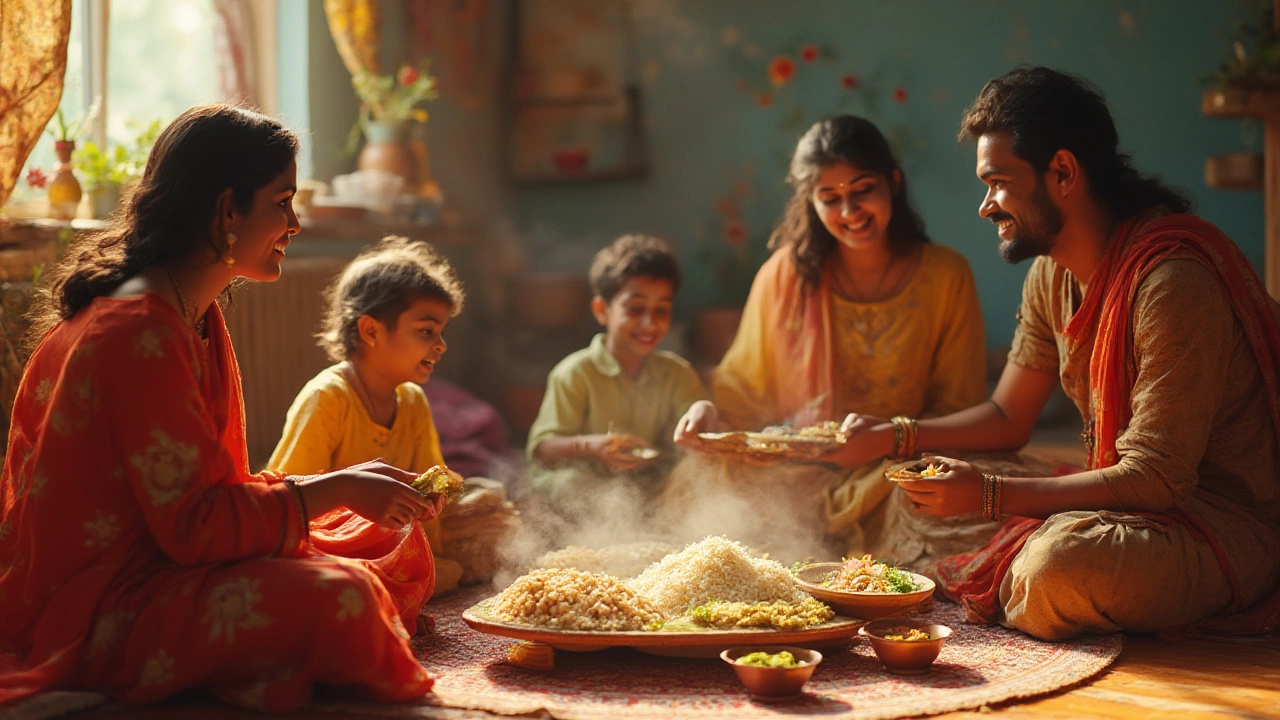SEARCH
Most Eaten Food in India – What the Whole Country Is Eating
If you’re wondering what Indians actually put on their plates every day, you’re in the right spot. The country’s huge, its cuisines are countless, but a few dishes appear on almost every table. Below is a quick rundown of the foods you’ll see in homes, street stalls, and even fancy restaurants across the subcontinent.
Everyday Staples You Can’t Miss
Roti or Chapati – Thin wheat flatbreads are the backbone of North and Central Indian meals. Most families roll dough by hand and cook them on a hot tawa. Pair them with any curry and you’ve got a simple, filling combo.
Rice – In the South, East and parts of the West, rice is king. Whether it’s plain boiled rice, jeera (cumin) rice, or a fragrant biryani, the grain is the base for dal, fish, or meat dishes.
Dal (Lentils) – Split peas, lentils, and beans are boiled, spiced, and served as a thick stew. Dal tadka, dal makhani, and sambar are everyday comforts that provide protein for most households.
Vegetable Curries – Seasonal veggies like potatoes, cauliflower, beans, and spinach are tossed in tomato, onion, and spice bases. You’ll find versions such as aloo gobi, bhindi masala, or palak paneer on almost every menu.
Regional Favorites That Have Gone Nationwide
Dosa & Idli – These fermented rice‑and‑lentil creations hail from South India but are now available in metros and smaller towns alike. Dosa is a crisp crepe, while idli are soft steam‑cooked cakes – both love a dollop of coconut chutney.
Biryani – A spiced rice dish layered with meat, eggs, or vegetables. Hyderabad’s biryani, Lucknow’s Awadhi version, and Kolkata’s fish biryani each have a loyal fan base, but the dish’s popularity cuts across the nation.
Paratha – Flaky, layered flatbreads that can be plain or stuffed (paneer, potatoes, cauliflower). North Indian breakfasts often feature hot parathas with butter or curd.
Samosa – Triangular pastries filled with spiced potatoes, peas, or meat. They’re a street‑food staple and a go‑to snack for tea time in most cities.
Chole Bhature – Spicy chickpea curry (chole) served with fluffy deep‑fried bread (bhature). It’s a hearty, indulgent dish loved especially in Punjab and Delhi but found everywhere.
These dishes are not just tasty; they’re affordable and easy to make, which is why they appear on menus from tiny dhabas to five‑star hotels.
When you travel, try to eat where locals eat. Look for crowded stalls, family‑run cafés, or canteens near schools and offices – the crowd is a good sign the food is both safe and loved.
Remember, Indian food can be spicy, but you can always ask for milder versions. Adding a side of yogurt, raita, or a squeeze of lemon helps balance heat.
Bottom line: Whether you’re a first‑time visitor or a repeat traveler, focusing on these most‑eaten foods will give you a real taste of everyday India without breaking the bank.

Most Eaten Food in India: What Is the Everyday Staple?
Curious what most Indians eat every day? Unpack India’s most eaten foods and how rice and roti rule millions of plates. Discover traditions and fun food facts!
Continue reading